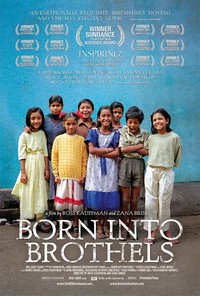Chatting with writer Emma Pei Yin on her upcoming debut novel “When Sleeping Women Wake”
When Sleeping Women Wake is an upcoming debut novel by British-born Hong kong-Chinese Australian writer Emma Pei Yin.
Set in 1941, during the Japanese occupation of Hong Kong, the novel tells the story of three interconnected women, as they start a journey of sacrifice, resilience and survival. A very deeply layered book indeed, and what a theme!
The author of When Sleeping Women Wake, Emma Pei Yin felt it was important to tell this story – one which is also close to her heart. In a recent interview with Being Asian Australian, Pei Yin shared some of her thoughts on this.
“The story and characters have been with me a long time. The novel was inspired by stories I heard from my grandfather growing up. I can still picture the nights spent sitting in our ancestral home courtyard beneath the lychee tree in Hong Kong. As my grandfather spoke of the war, my grandmother always remained quiet”, Pei Yin stated.
“She never shared her stories but her expression spoke a thousand words. I always wanted to know what her story was and I’m regretful that I never asked when I had the opportunity to do so. Women have fought for their place since the beginning of time – the determination and resilience of a woman isn’t anything new – and while the novel centres a lot of these themes, it’s not the ultimate message”.

Interestingly, many of the locations and environments mentioned in the novel are based upon places in Hong Kong Pei Yin has lived and/or worked in. She discusses that what makes Hong Kong so unique is its blend of east meets west.
“A lot of the novel’s setting is based on real places I have lived or worked in. What’s wonderful about Hong Kong, is the blend of East meets West. How, growing up there in the early 2000s still offered such insight into how colonial Hong Kong would have been like too. Moreover, the characters I have created reflect the multiculturalism of Hong Kong society during the 1940s when the story is set. The characters come from different backgrounds, speak different languages and embody various aspects of Hong Kong’s identity. Through their interactions and experiences, readers get a sense of the complexity and diversity of life in Hong Kong. I have also added elements of social issues into the storyline, too. From the struggles of the working class to the tensions surrounding identity and belonging, these themes resonate with the experiences of many people in Hong Kong even now”.
To truly understand the thought processes Pei Yin went through in writing When Sleeping Women Wake, it is important to understand her own journey in becoming a writer. Pei Yin’s love for writing started bery young – when she was a child and accompanied and watched her grandfather write Chinese calligraphy.
“I have always loved reading and writing. From the early days of my childhood where I sat next to my grandfather and watched as he practised his calligraphy to the time my mum brought me a Mulan diary and I began writing ‘dear diary’ entries. Writing is one of the most beautiful forms of expression there is and words hold so much meaning to me. Becoming an author wasn’t easy though. It was a dream that many of us have as children, that many of us never pursue. It wasn’t until my late twenties where I decided to risk it all for the sake of the dream. Luckily, it worked out. Well, I say luckily, but a lot of it came down to hard word, dedication and genuine faith and trust in myself that I had a good enough story to tell”, Pei Yin discussed.
Finally, an important discussion point came up during the interview with Pei Yin- one which she is passionate about. What does the future hold for Asian Australian authors to have their authentic voices and stories heard? Pei Yin also questioned whether large, mainstream publishing companies are doing enough to ensure there is a diversity of stories published.

“You know, people always say that the publishing industry is a very subjective one. And, sure, it is, to some extent. There are particular genres I don’t often lean towards but I think that’s where I’m falling short as a reader. By limiting what I read, I’m restricting what I can learn about the world. I think the same way for publishing. I think that publishers have a responsibility to ensure that they’re not being ‘subjective’ and that what they offer to readers is something that can elevate the diverse voices of a particular place. From my experience as a bookseller, I can confidently say that there are many readers out there who want to read more books by Asian authors. I hope the Australian publishing industry continues to progress and recognises the significant demand for books by Asian authors. It’s not about taking risks anymore; it’s about embracing our stories and trusting in the substantial market for them”.
Quercus Fiction have acquired the rights to Pei Yin’s debut novel “When Sleeping Women Wake”, which will be available for sale in 2025 – more information on dates to come!
==
